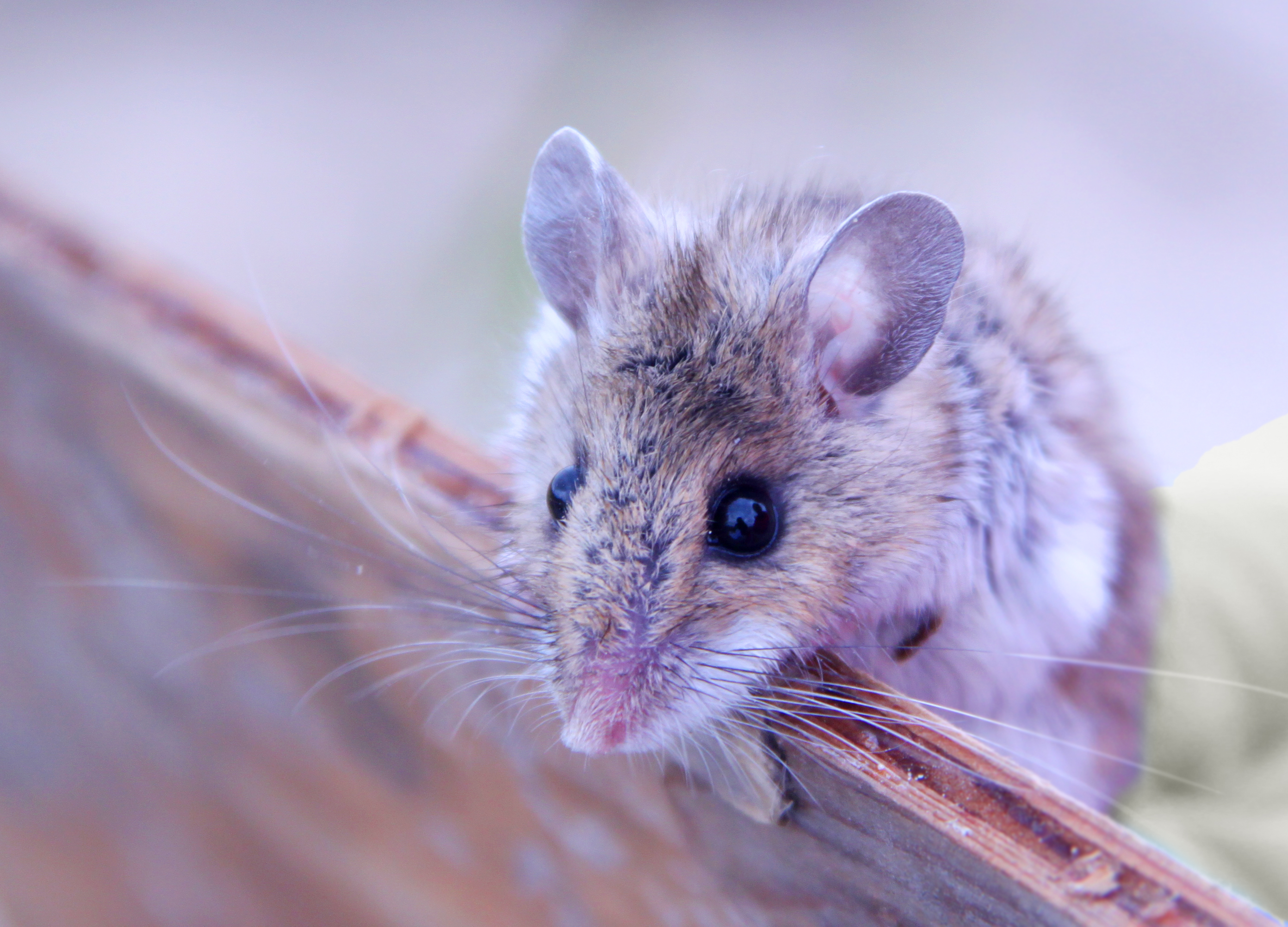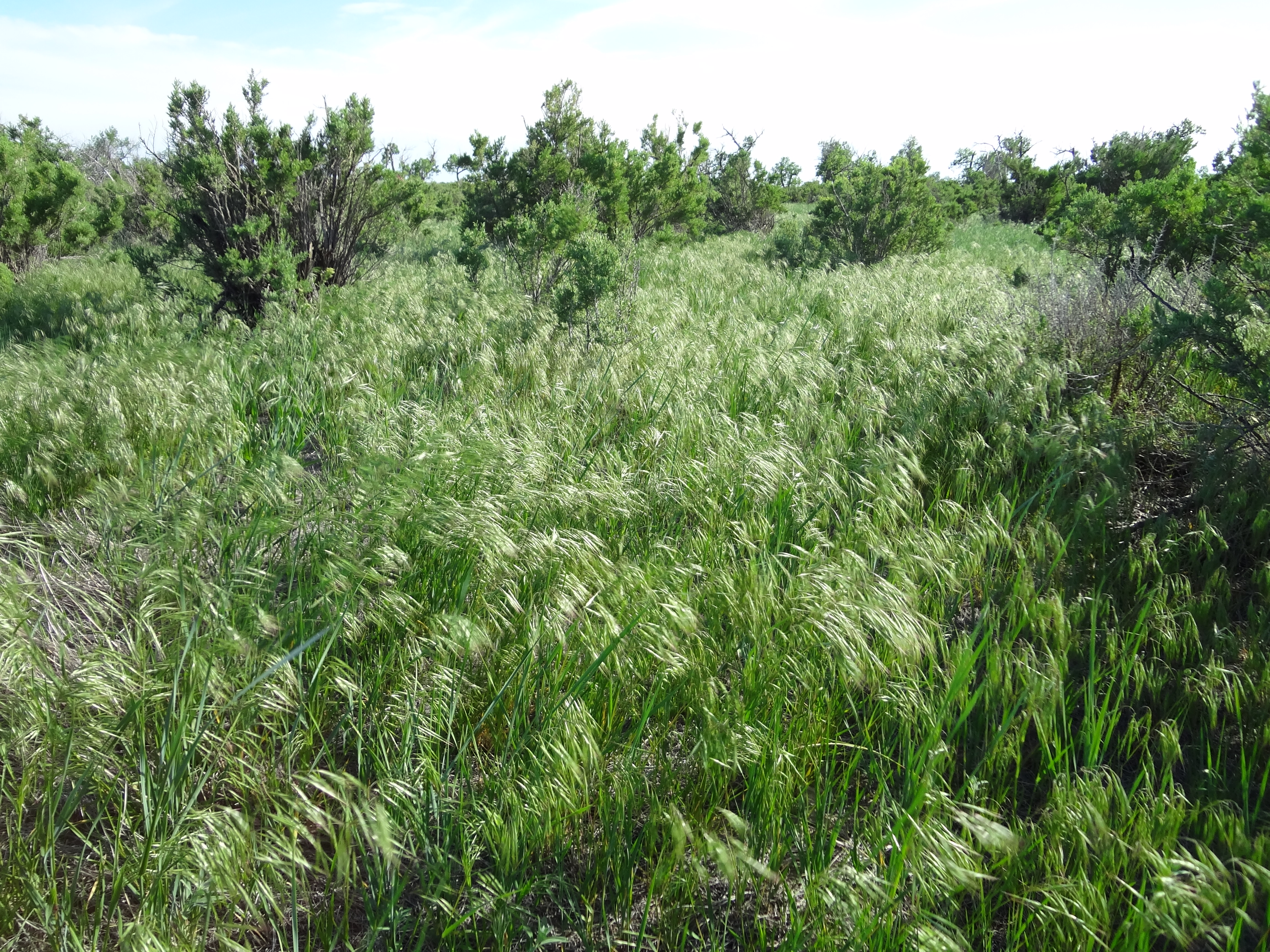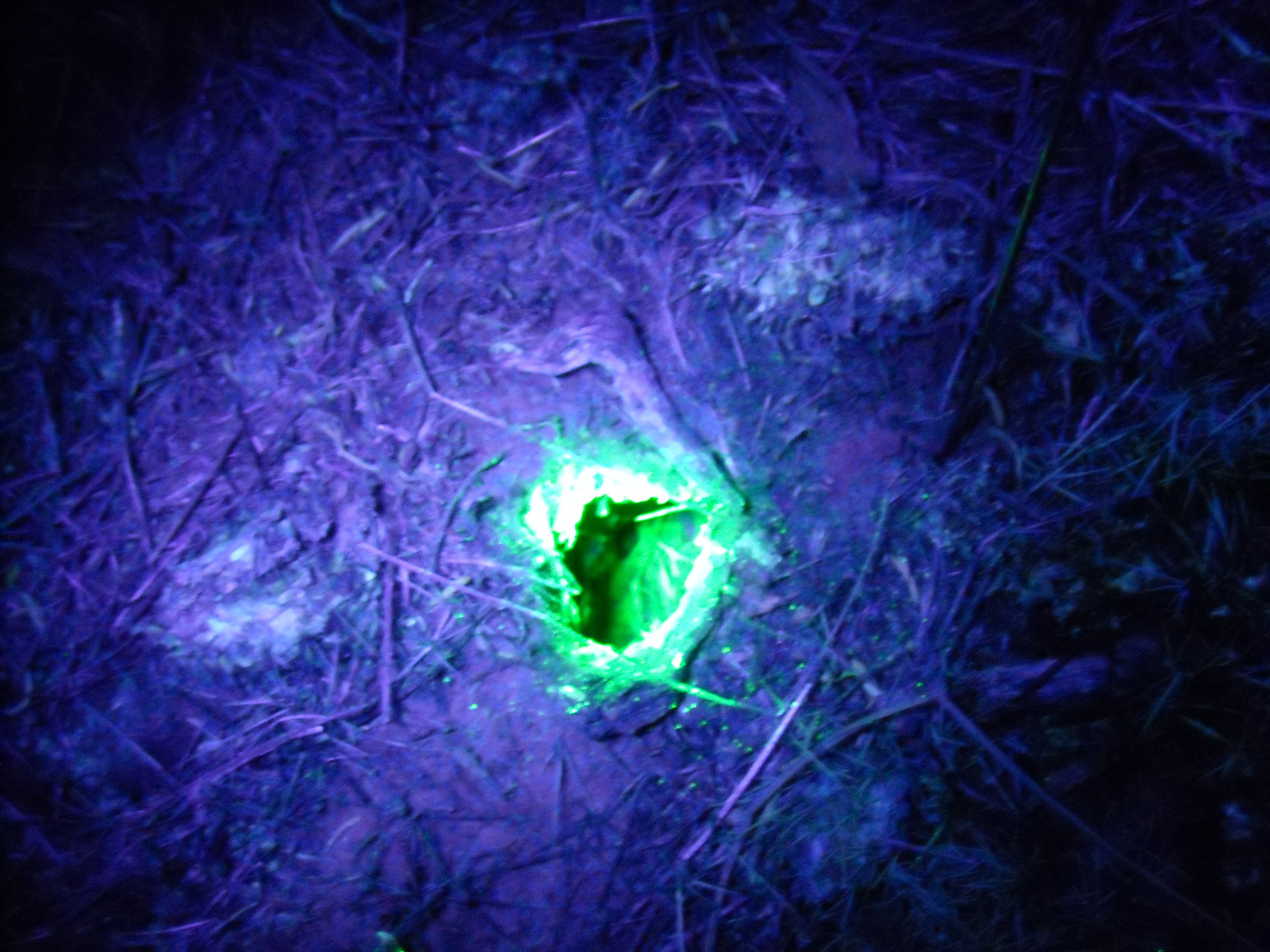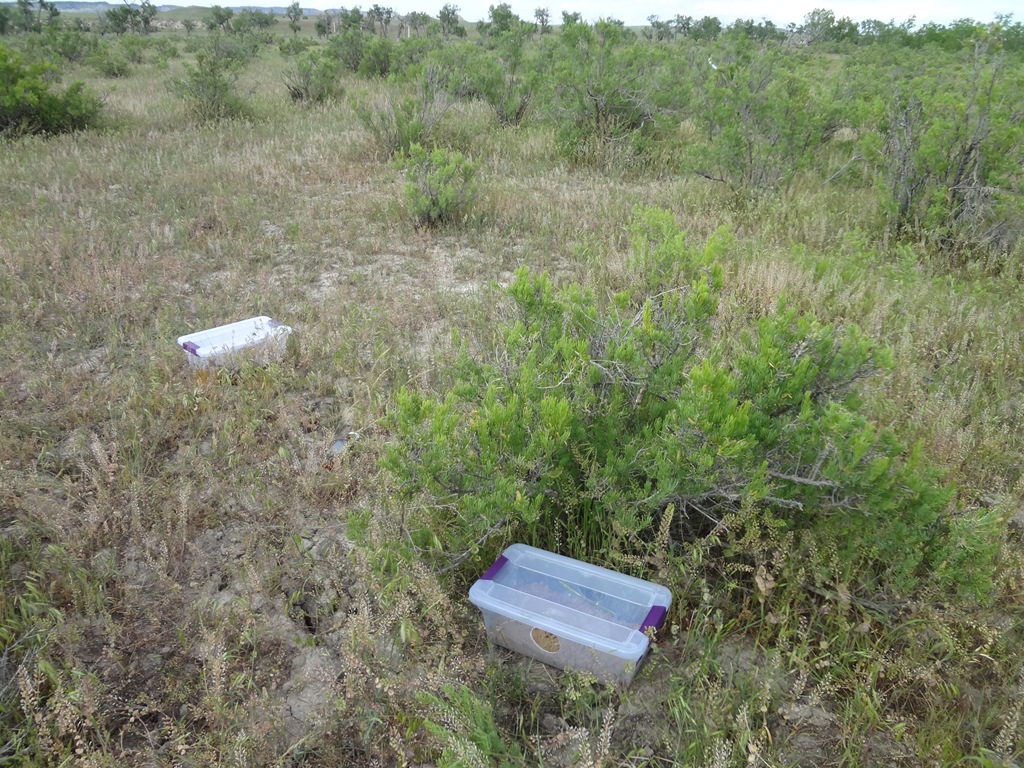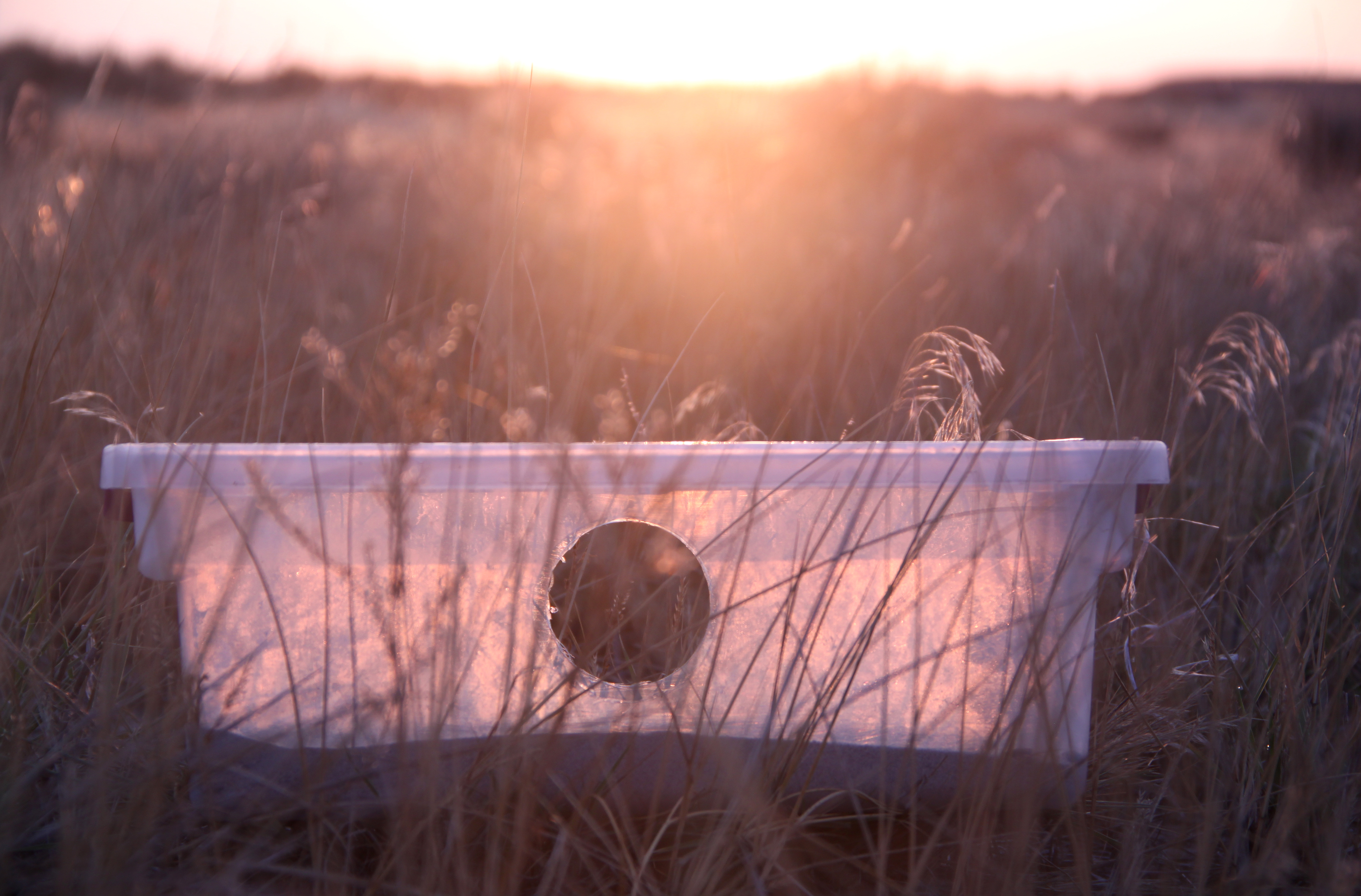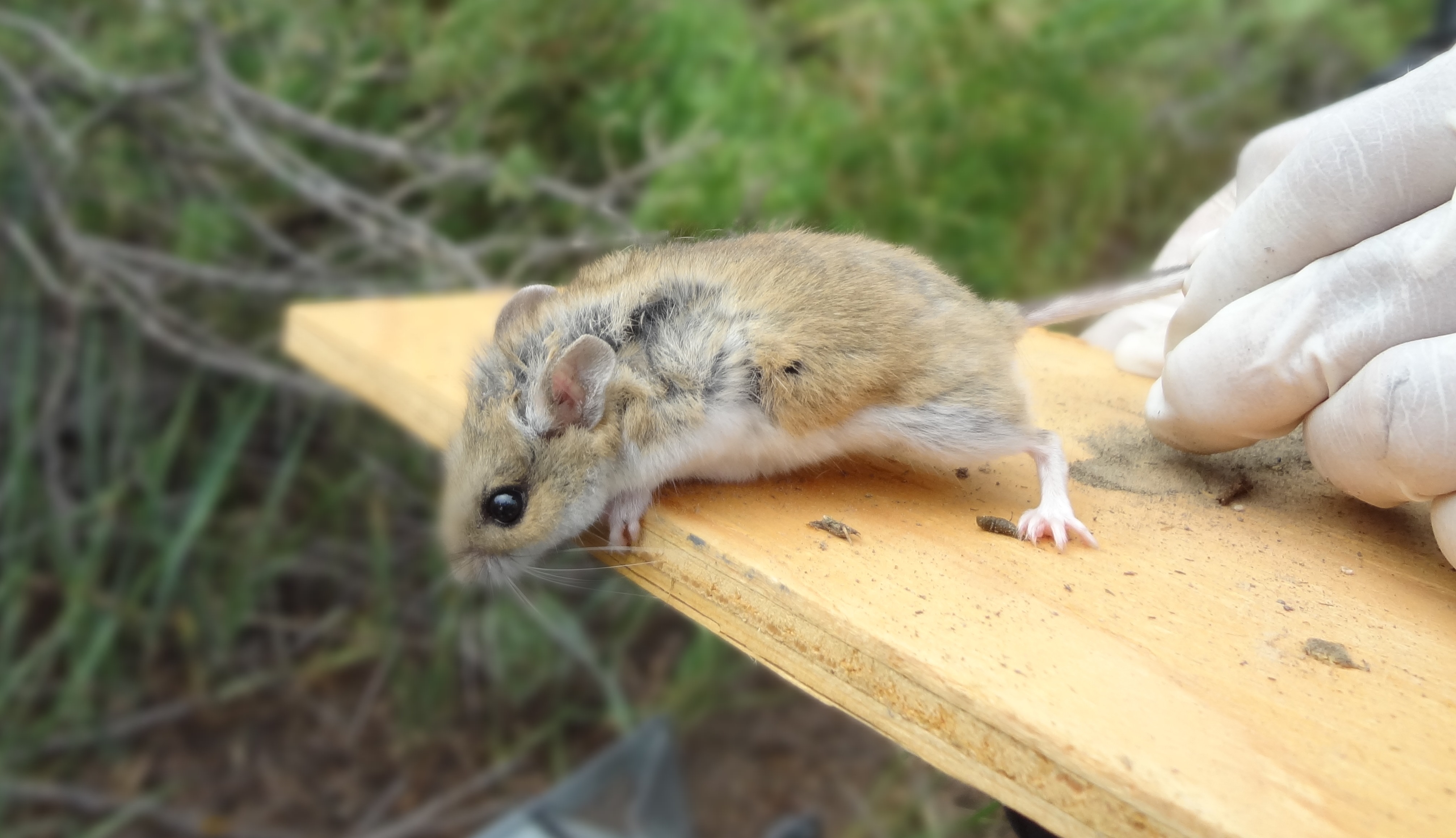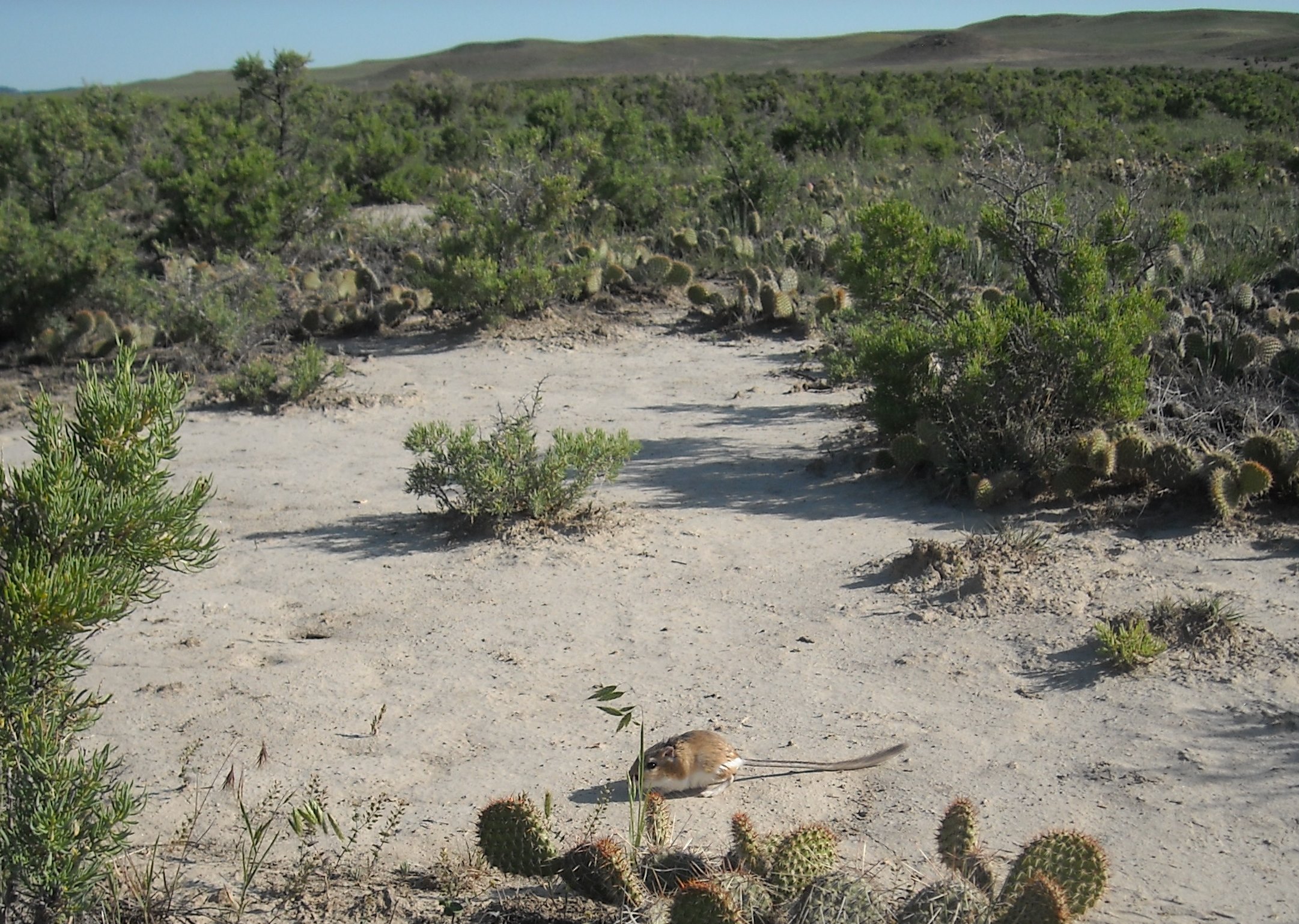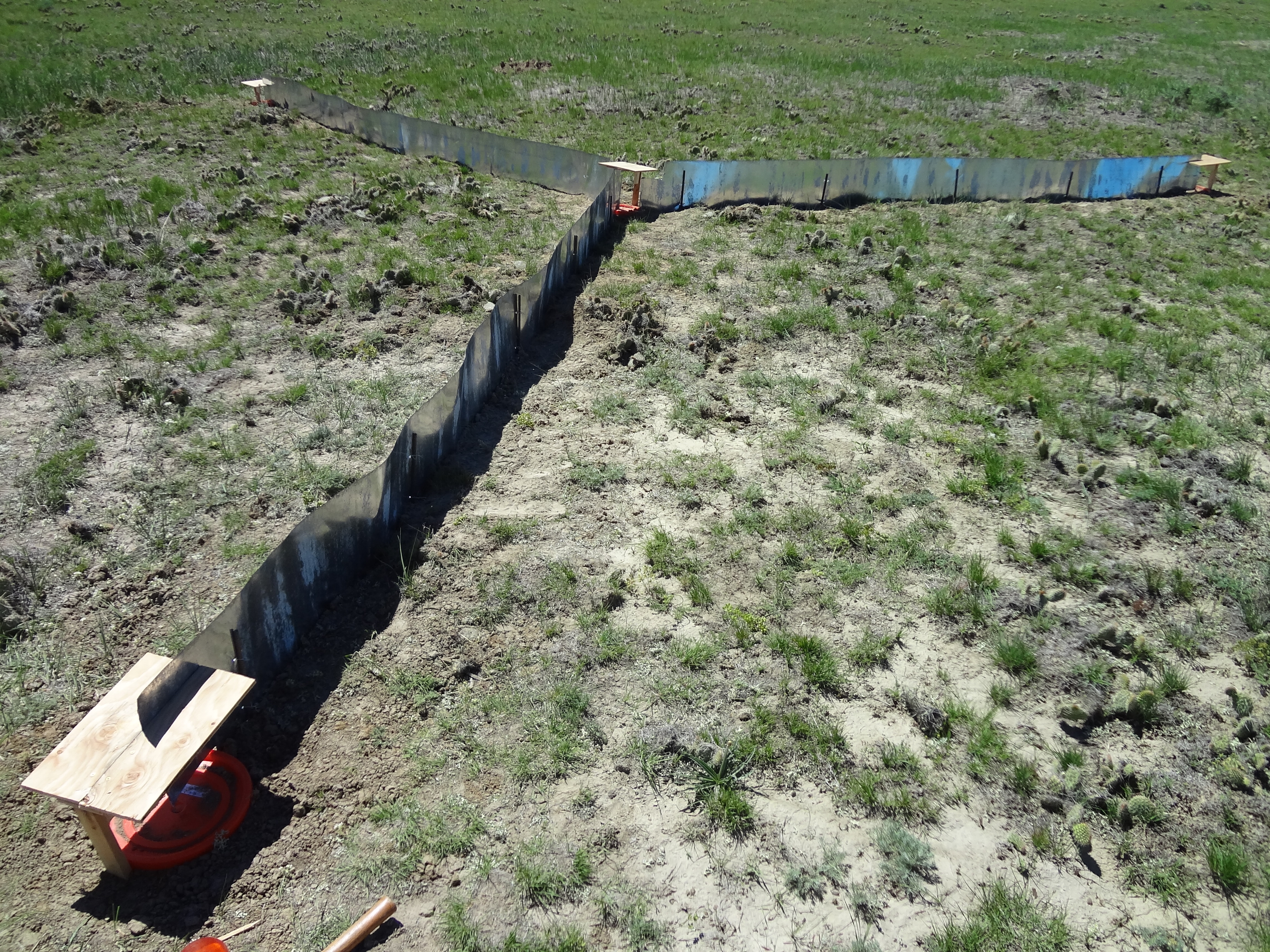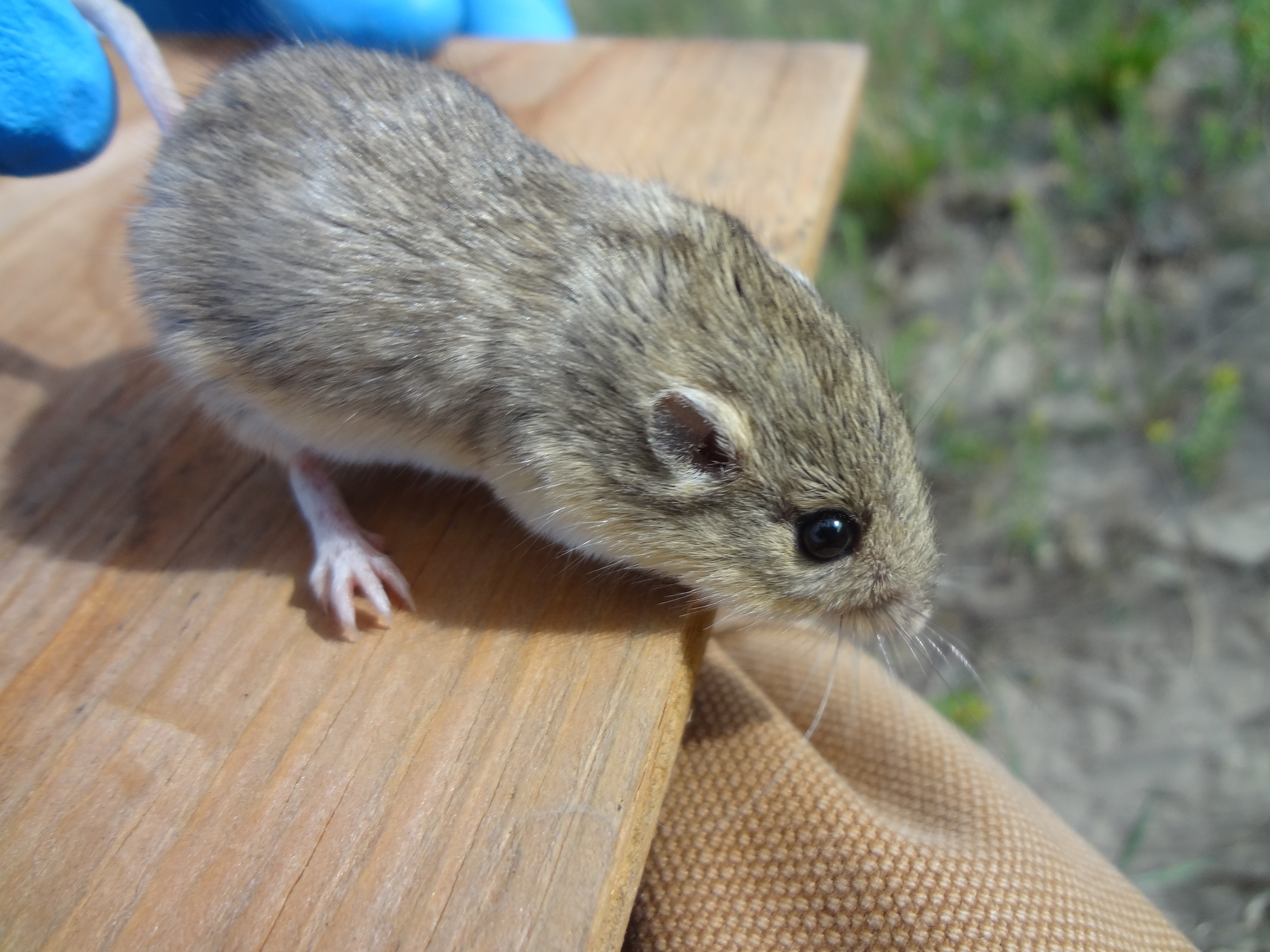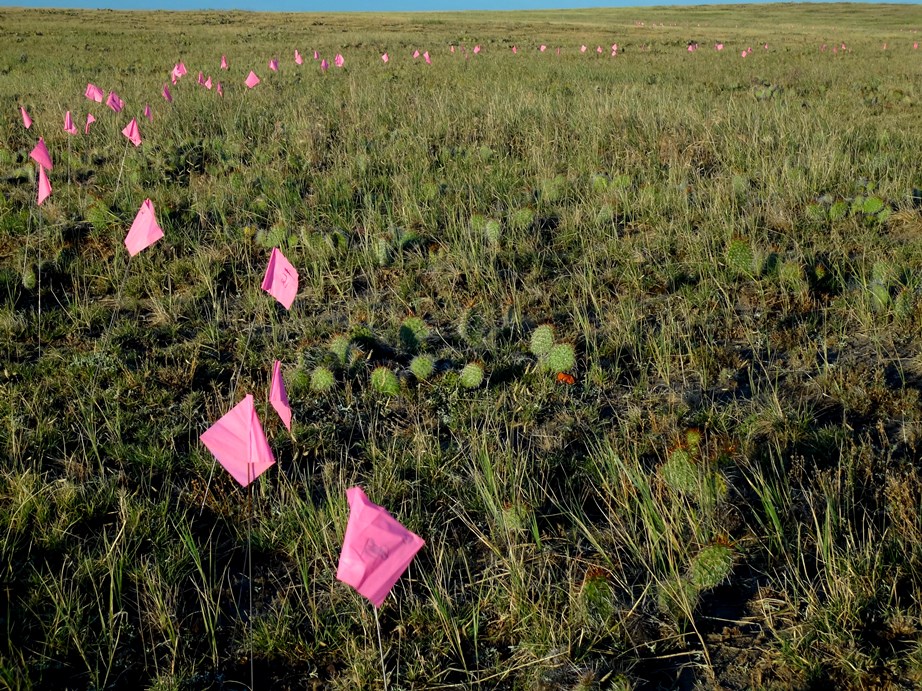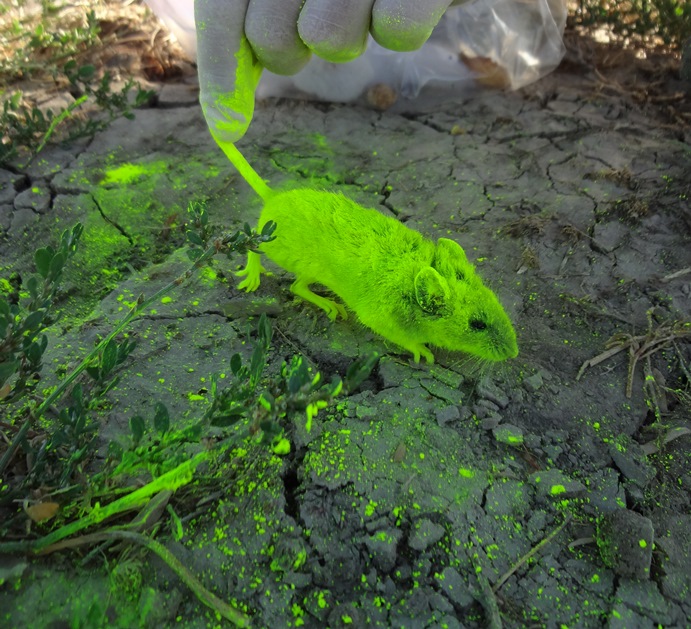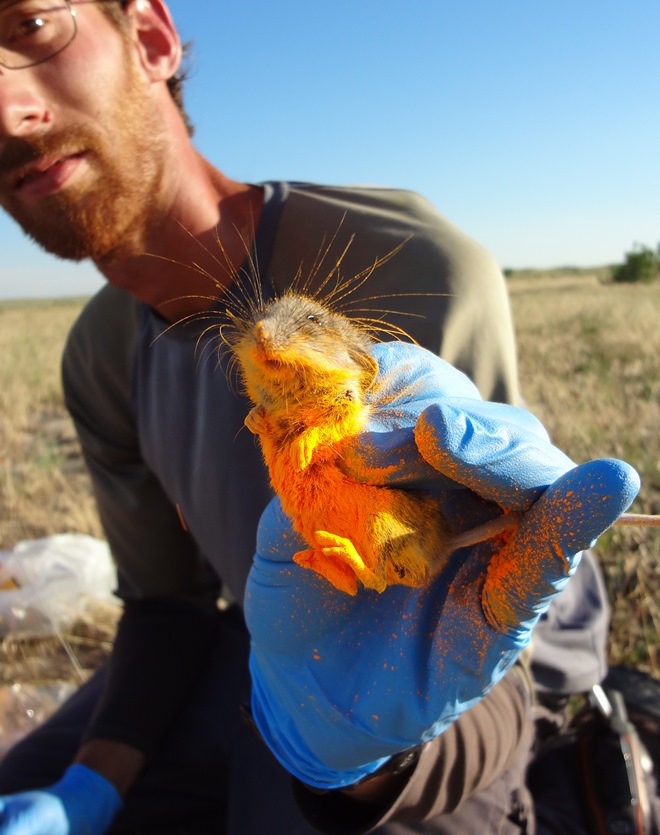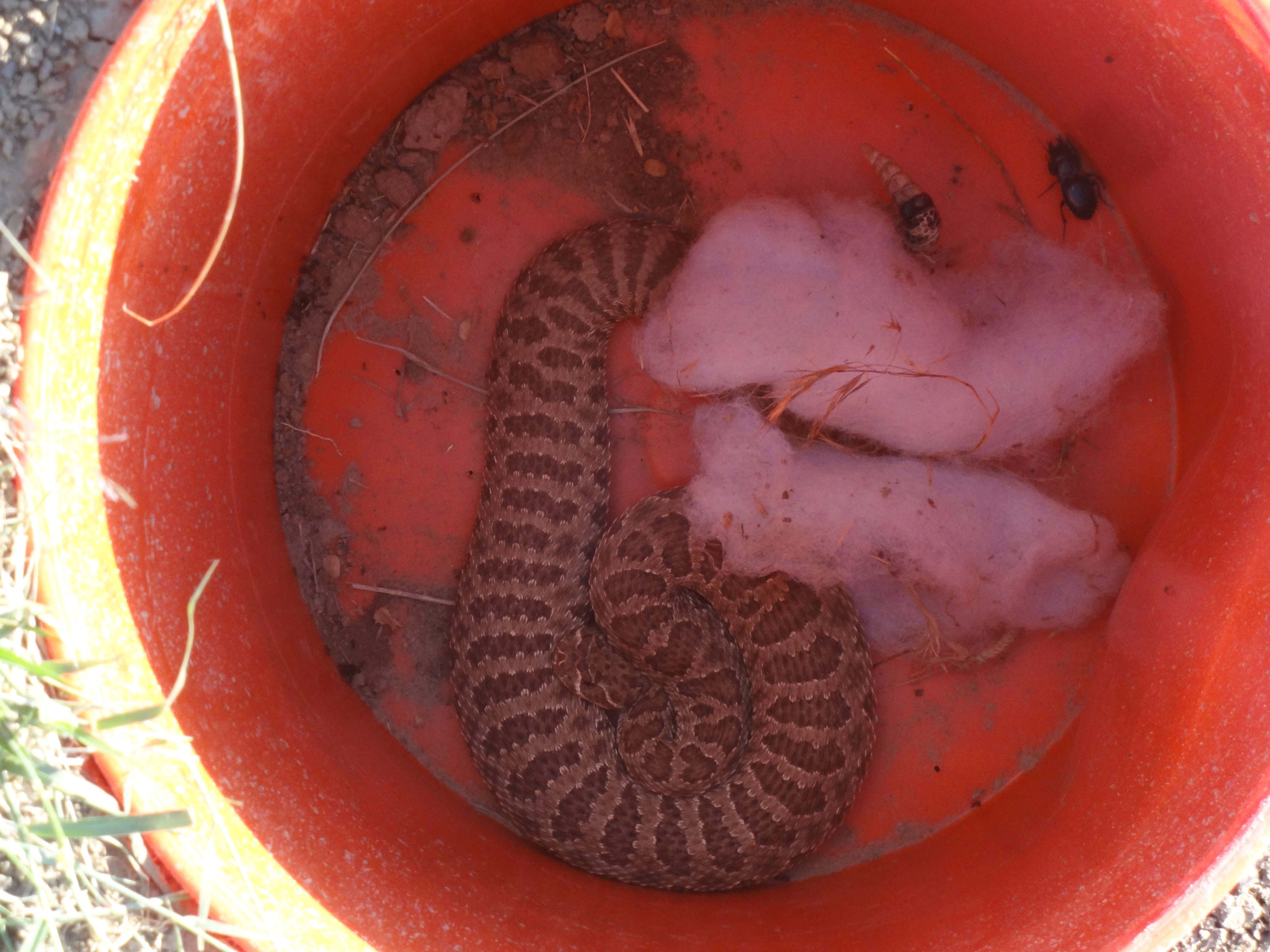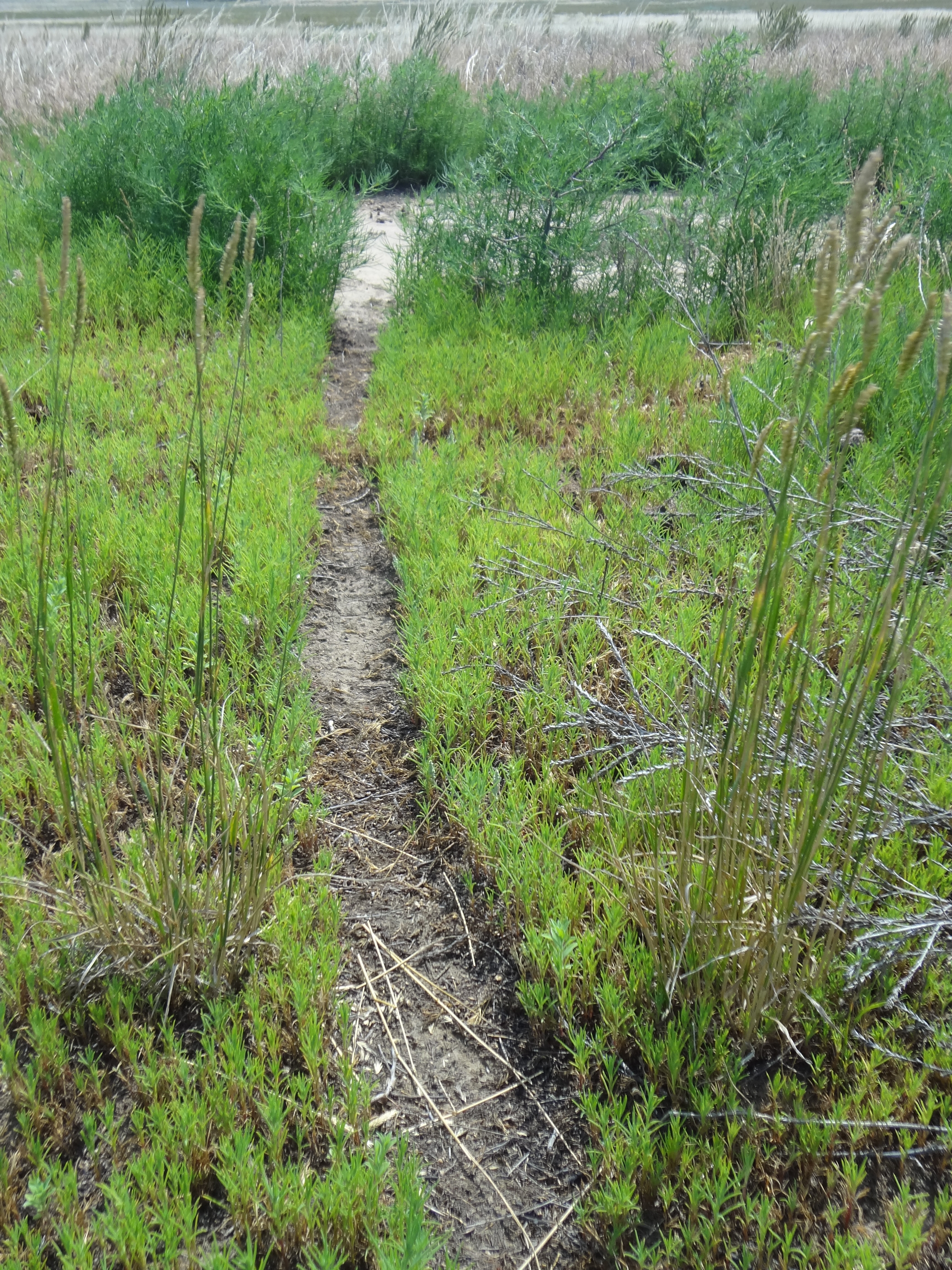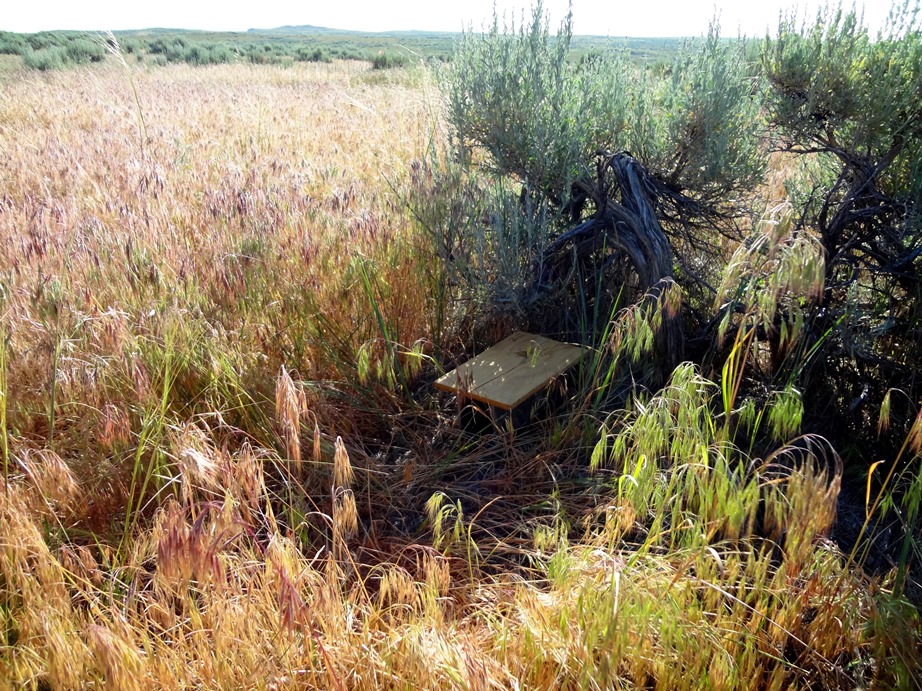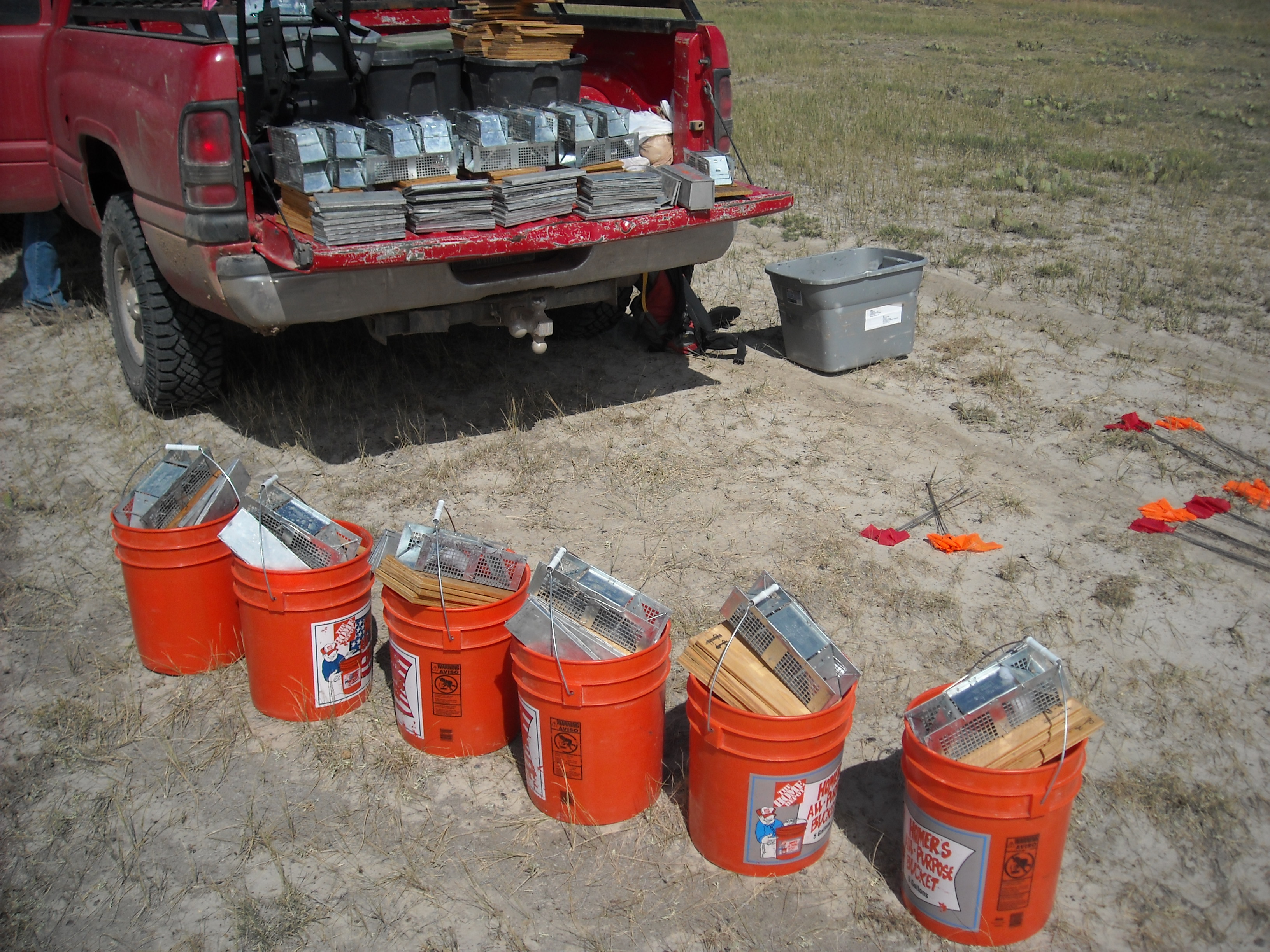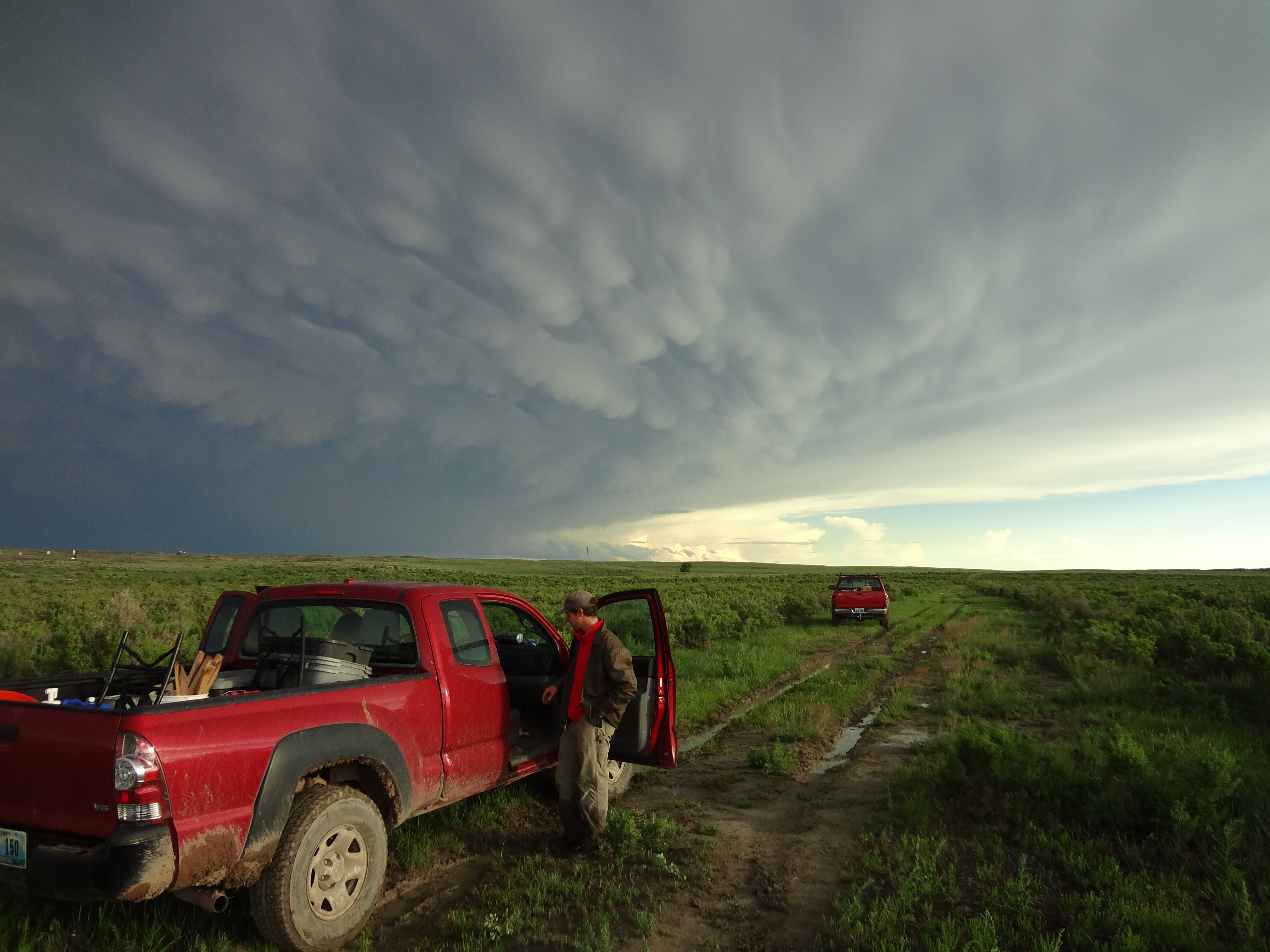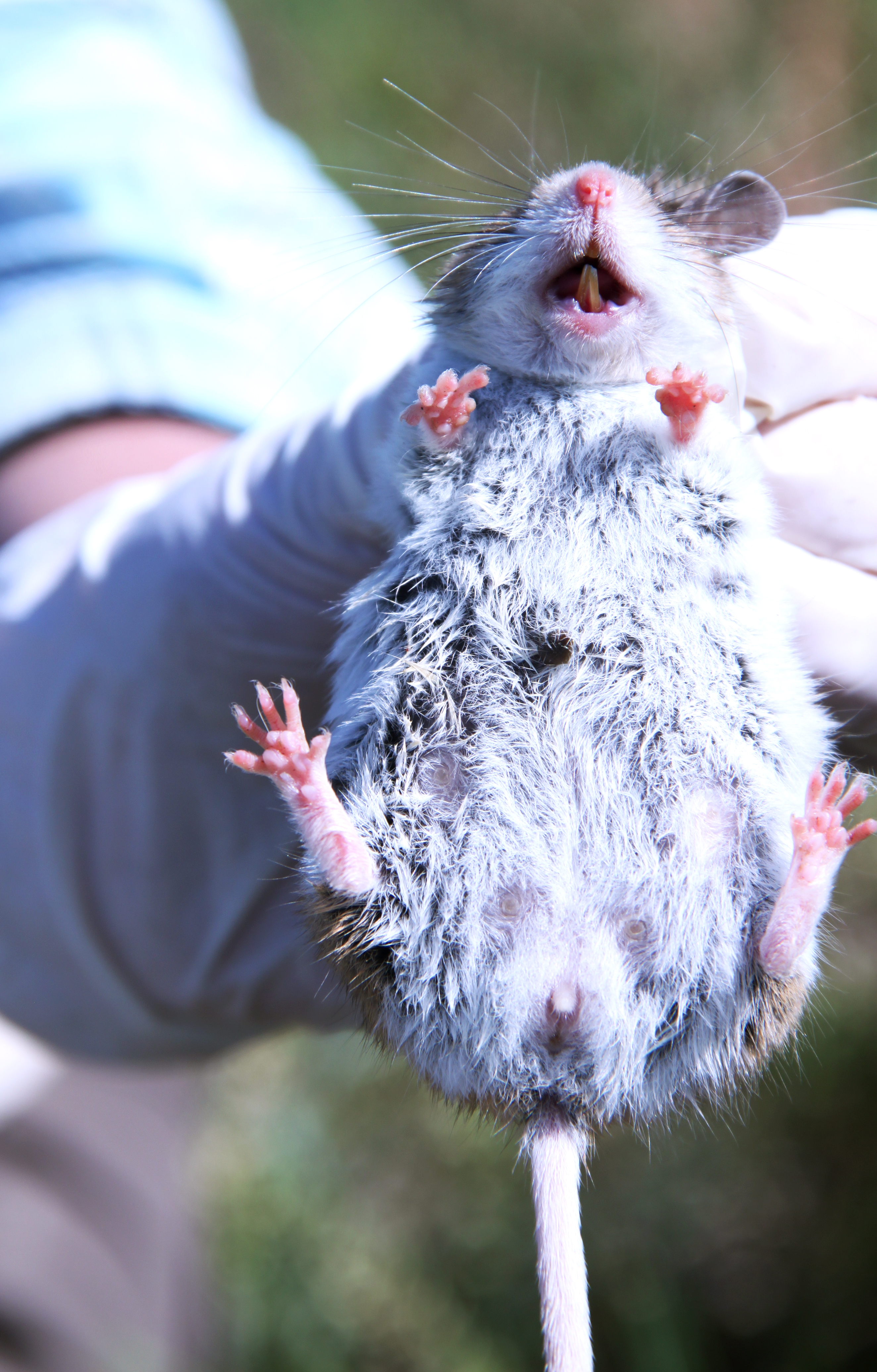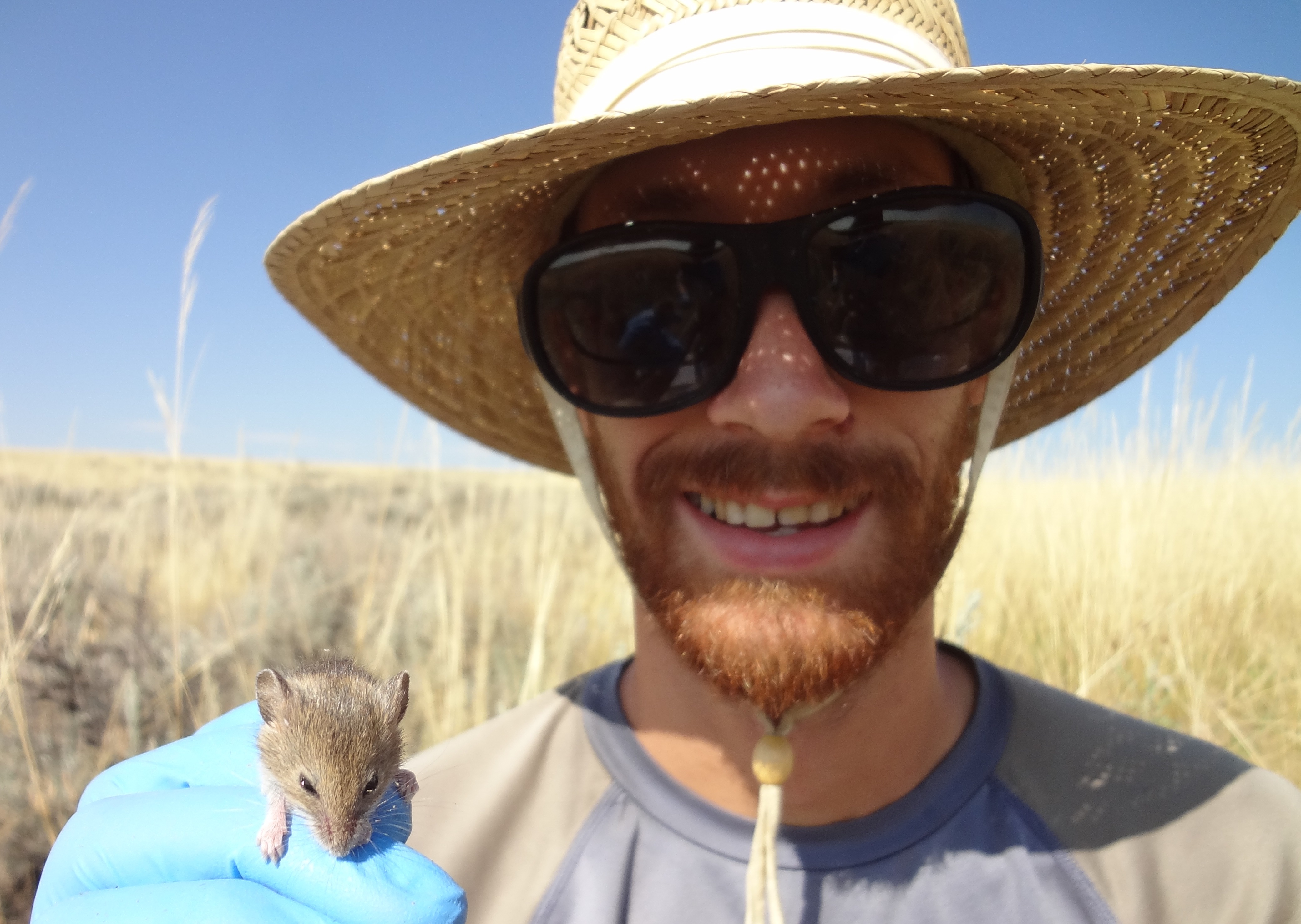A pervasive and intensifying form of disturbance that can vastly alter wildlife habitat is non-native species invasion. Invasive species threaten biodiversity worldwide and are considered the most significant conservation threat after habitat loss and fragmentation. Invasive plants, for example, can have direct and indirect effects on wildlife by replacing heterogeneous native plant communities with communities of highly simplified composition and structure.
My research focuses on how habitat alteration by invasive species influences populations and communities of native wildlife. Specifically, I’m studying how the invasion of an exotic grass (cheatgrass) affects grassland and shrubland small mammals. We conducted field work in 2013 and 2014 from mid-May to mid-August in Thunder Basin National Grassland, WY. We live trapped small mammals (mark-recapture) on 16 sites across a gradient of cheatgrass cover (range: 0, 71%) and conducted extensive vegetation surveys at each site. In addition to live trapping, we assessed m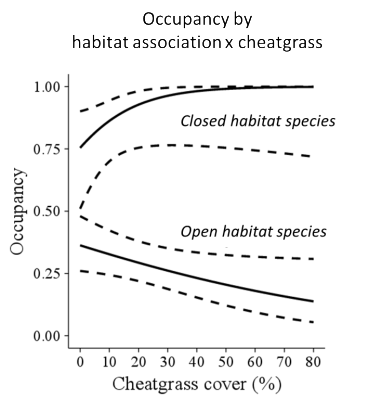 icrohabitat selection by powder tracking individual animals and used foraging trials (giving-up density) to indirectly measure predation risk.
icrohabitat selection by powder tracking individual animals and used foraging trials (giving-up density) to indirectly measure predation risk.
Objectives
- Quantify the influence of cheatgrass (Bromus tectorum) on grassland and shrubland small mammal occupancy, abundance, survival, habitat selection, population structure, body condition and richness.
- Test alternative hypotheses to explain the mechanisms behind the patterns observed in objective 1. Hypotheses center on understanding whether cheatgrass alters predation risk for small mammals.
- Assess the relative effectiveness of different small mammal trap techniques: Sherman live traps, Havahart mesh-sided traps, and drift fences with pitfall traps.
Gallery
Deer mouse, Thunder Basin National Grassland, WY (photo: Tiff Shao)
Deer mouse, Thunder Basin National Grassland, WY (photo: Tiff Shao)
Dense cheatgrass, Thunder Basin National Grassland, WY
Dense cheatgrass, Thunder Basin National Grassland, WY
Entrance to burrow, powder tracking, Thunder Basin National Grassland, WY
Entrance to burrow, powder tracking, Thunder Basin National Grassland, WY
Giving-up density experiment to indirectly measure predation risk, Thunder Basin National Grassland, WY
Giving-up density experiment to indirectly measure predation risk, Thunder Basin National Grassland, WY
Giving-up density experiment to indirectly measure predation risk, Thunder Basin National Grassland, WY (photo: Tiff Shao)
Giving-up density experiment to indirectly measure predation risk, Thunder Basin National Grassland, WY (photo: Tiff Shao)
Northern grasshopper mouse, Thunder Basin National Grassland, WY
Northern grasshopper mouse, Thunder Basin National Grassland, WY
Ord's kangaroo rat in greasewood-prickly pear habitat, Thunder Basin National Grassland, WY
Ord’s kangaroo rat in greasewood-prickly pear habitat, Thunder Basin National Grassland, WY
Pitfall trap array, Thunder Basin National Grassland, WY
Pitfall trap array, Thunder Basin National Grassland, WY
Pocket mouse, Thunder Basin National Grassland, WY
Pocket mouse, Thunder Basin National Grassland, WY
Powder track trail, Thunder Basin National Grassland, WY
Powder track trail, Thunder Basin National Grassland, WY
Powder tracking deer mouse, Thunder Basin National Grassland, WY
Powder tracking deer mouse, Thunder Basin National Grassland, WY
Powder tracking deer mouse, Thunder Basin National Grassland, WY
Powder tracking deer mouse, Thunder Basin National Grassland, WY
Rattlesnake in pitfall trap, Thunder Basin National Grassland, WY
Rattlesnake in pitfall trap, Thunder Basin National Grassland, WY
Rodent run, Thunder Basin National Grassland, WY
Rodent run, Thunder Basin National Grassland, WY
Small mammal trap at high cheatgrass site, Thunder Basin National Grassland, WY
Small mammal trap at high cheatgrass site, Thunder Basin National Grassland, WY
Staging small mammal traps (120 traps and coverboards per grid), Thunder Basin National Grassland, WY
Staging small mammal traps (120 traps and coverboards per grid), Thunder Basin National Grassland, WY
Dark afternoon sky after intense hail storm, Thunder Basin National Grassland, WY
Dark afternoon sky after intense hail storm, Thunder Basin National Grassland, WY
Early evening storm, Thunder Basin National Grassland, WY
Early evening storm, Thunder Basin National Grassland, WY
Very pregnant deer mouse, Thunder Basin National Grassland, WY (photo: Tiff Shao)
Very pregnant deer mouse, Thunder Basin National Grassland, WY (photo: Tiff Shao)
Reports & Publications
Ceradini & Chalfoun. (2017) Species’ traits help predict small mammal responses to habitat homogenization by an invasive grass. Ecological Applications, 27, 1451–1465.
Ceradini & Chalfoun. (2017) When perception reflects reality: Non-native grass invasion alters small mammal risk landscapes and survival. Ecology and Evolution, 1823–1835.
Contact
Joe Ceradini
JoeCeradini at gmail.com
Project Lead
Joe focuses on how habitat alteration by invasive species influences populations and communities of native wildlife.
Funding & Partners
- Wyoming Game and Fish Department
- Wyoming Governor’s Big Game License Coalition Grant
- Zoology and Physiology Department, University of Wyoming
- Statistics Department, University of Wyoming
- U.S. Forest Service
 icrohabitat selection by powder tracking individual animals and used foraging trials (giving-up density) to indirectly measure predation risk.
icrohabitat selection by powder tracking individual animals and used foraging trials (giving-up density) to indirectly measure predation risk.


